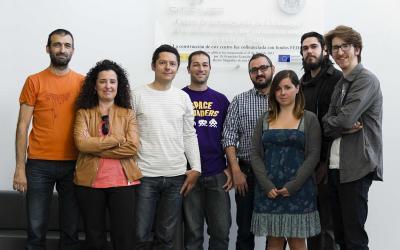Researchers at the University of Granada have designed new software that provides real time data on traffic. It is a device that provides information on traffic flow between cities. Drivers can use this information to choose the fastest route as they plan to drive to their destinations.
It is a highly reliable, low-cost method, easy and quick to install, which uses bluetooth devices. These devices collect real-time data on road traffic which it then sends to a central server. This information is then processed using complex data mining algorithms, evolutionary computing and neuronal networks, with the aim of providing users with information and predictions on the density and flow of traffic on any given route.
Current systems in use for the collection of data and the generation of information on the state of road traffic lack the capacity to identify the vehicles they detect and they are also costly, which makes them too expensive for use in secondary roads. This restricts their use to main roads that connect large urban centres.

This photo depicts researchers at the University of Granada who had developed the SIPEsCa project.
(Photo Credit: UGR)
The SIPEsCa project (Spanish for Low Cost Autonomous Information and Prediction System for Real Time Data on the State of Roads using Distributed Devices) has been developed by the GeNeura University of Granada research group and the company Ciudad 2020, with funds provided by the Andalusia 2007-2013 FEDER programme and with the support of personnel and researchers from the Public Works Agency at the Junta de Andalucia (the Andalusian regional government).
Data collection
According to the PI of this project, Pedro A. Castillo, from the Computer Architecture and Technology Department at the ETSIIT of the University of Granada, this new system is being tested in the metropolitan areas of Granada and Seville. Twenty monitorization nodes have been installed in these areas for data collection.
The data gathered through these devices generate a variety of statistics on vehicle use in their respective areas. "Thanks to this new method we have been able to monitor traffic density and movement on an individual basis, as vehicle users move between nodes within the zone in question".
These devices capture the signals broadcast by the different technological components inside each vehicle, such as GPS or hands-free devices, as well as drivers' mobile phones. As far as data privacy is concerned, the research team emphasises that the data they collect 'are never associated with any specific user, since they do not gather any information that can allow for the personal identification of the user from which they are collected'. To protect privacy they use encrypting technologies that do not allow for the identification of the MAC of the wireless device, which minimizes the intrusivity within the data gathering process.
According to Prof. Castillo, this information system developed at the University of Granada "facilitates real time information on the state of traffic, not only for institutions and authorities in charge of traffic regulation and control, but also for individual users—though mobile phone alerts or web-based devices".
Source: University of Granada